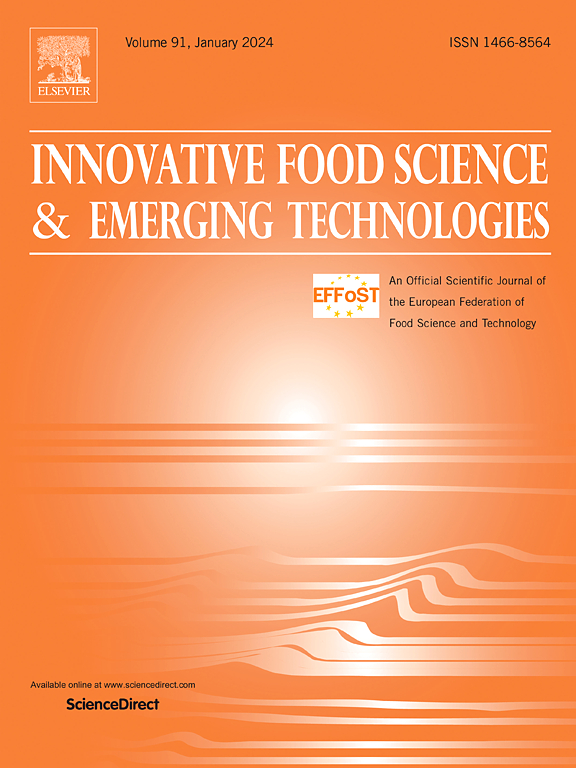Pulsed electric fields for sustainable meat, poultry, and fish processing: Recent advances, prospects, and industry challenges
IF 6.3
1区 农林科学
Q1 FOOD SCIENCE & TECHNOLOGY
Innovative Food Science & Emerging Technologies
Pub Date : 2025-03-18
DOI:10.1016/j.ifset.2025.104008
引用次数: 0
Abstract
The demand for meat, poultry, and seafood products has been growing steadily. These highly perishable food items' spoilage and waste utilization have become a key concern. Effective processing methods are required to extend their shelf-life and mitigate the risks associated with these products. Processing meat, poultry, and seafood needs a transformative shift as traditional thermal technologies, while effective, often result in undesired changes to microstructure, nutrient content, and overall product quality. In this context, the pulsed electric field (PEF) is a highly prospective non-thermal technology that uses short pulses of electric fields to treat a diverse range of food products while reducing energy consumption and minimizing environmental impact. This review is a comprehensive approach to understanding current knowledge and the most recent developments and prospects of meat, poultry, and seafood processing by PEF. It could be used as a valuable strategy for tenderization, microbial inactivation, recovery of compounds from by-products, accelerated diffusion, preservation, and food safety of these products. It also provides insight into sustainability, a comparison with alternative non-thermal technologies, and the limitations concerning the industry's present requirements. This review offers guidance for future studies in this field and other challenges that must be addressed.

脉冲电场用于肉类、家禽和鱼类的可持续加工:最新进展、前景和行业挑战
对肉类、家禽和海鲜产品的需求一直在稳步增长。这些高度易腐食品的腐败和浪费利用已成为一个关键问题。需要有效的处理方法来延长其保质期并减轻与这些产品相关的风险。肉类、家禽和海鲜加工需要转型,因为传统的热技术虽然有效,但往往会导致微观结构、营养成分和整体产品质量的不良变化。在这种情况下,脉冲电场(PEF)是一种极具前景的非热技术,它使用短脉冲电场来处理各种食品,同时减少能源消耗并最大限度地减少对环境的影响。这篇综述是一个全面的方法来了解目前的知识和最新的发展和肉类,家禽和海产品的PEF加工的前景。它可以作为一种有价值的策略,用于嫩化、微生物灭活、从副产物中回收化合物、加速扩散、保存和食品安全。它还提供了对可持续性的见解,与其他非热技术的比较,以及有关行业当前要求的局限性。这篇综述为该领域的未来研究和其他必须解决的挑战提供了指导。
本文章由计算机程序翻译,如有差异,请以英文原文为准。
求助全文
约1分钟内获得全文
求助全文
来源期刊
CiteScore
12.00
自引率
6.10%
发文量
259
审稿时长
25 days
期刊介绍:
Innovative Food Science and Emerging Technologies (IFSET) aims to provide the highest quality original contributions and few, mainly upon invitation, reviews on and highly innovative developments in food science and emerging food process technologies. The significance of the results either for the science community or for industrial R&D groups must be specified. Papers submitted must be of highest scientific quality and only those advancing current scientific knowledge and understanding or with technical relevance will be considered.

 求助内容:
求助内容: 应助结果提醒方式:
应助结果提醒方式:


